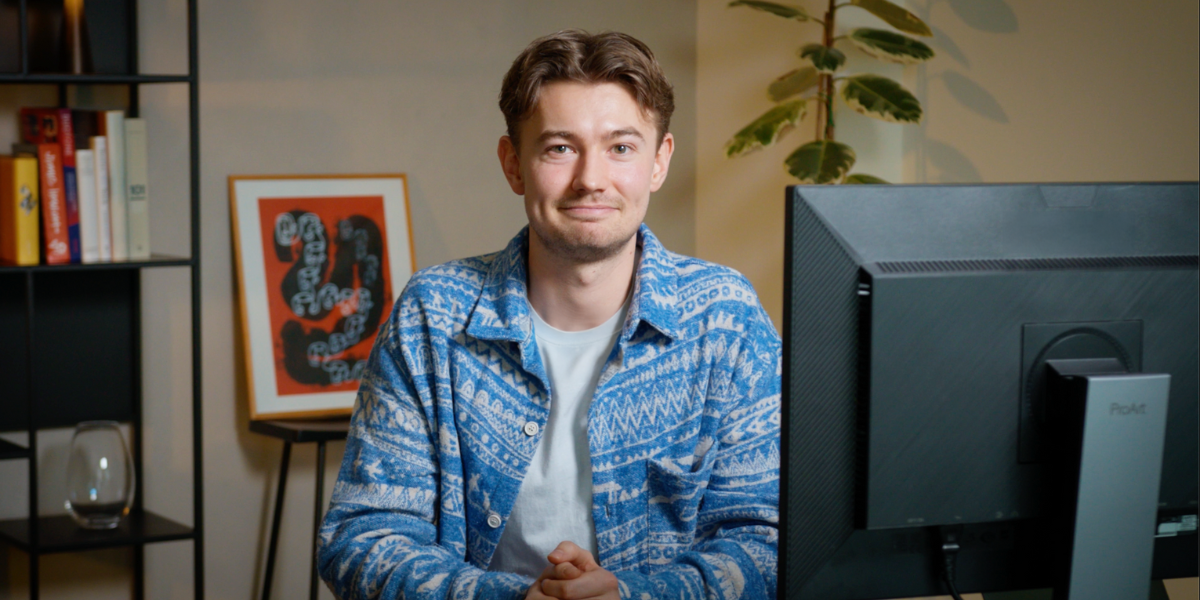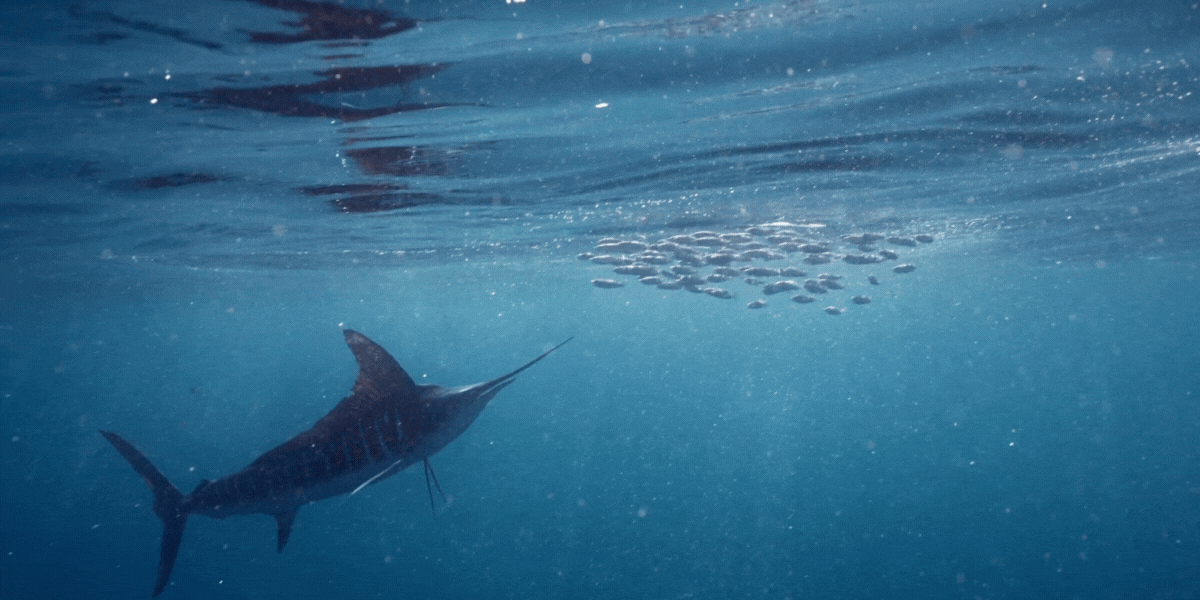Te encanta escribir… ¿por qué no escribes?
Como ser humano en el mundo moderno, escribir es difícil. Es difícil aislarse del mundo exterior —y del mundo interior de tu teléfono, tu ordenador, tu mente— y simplemente escribir.
Desde las redes sociales hasta el correo electrónico e internet, la tecnología actual está diseñada para captar nuestra atención y mantenerla. Y si superas esas distracciones externas y te sientas a escribir, también te enfrentas a obstáculos internos engañosos. ¿El más insidioso? El crítico interno.
Los humanos, por naturaleza, evaluamos constantemente las situaciones, imaginamos resultados y tomamos decisiones; es parte de la supervivencia. Pero también significa que evaluamos automáticamente todas nuestras acciones, incluyendo lo que escribimos. Esa vocecita se llama nuestro crítico interior y no solo obstaculiza el progreso, sino que también puede impedirnos siquiera empezar.
En otras palabras: tu crítico interno está matando tu recuento de palabras y tu creatividad.
Entra: escritura libre.
En este artículo:

¿Qué es la escritura libre?
Steven Mintz, profesor de historia de la Universidad de Texas en Austin, postula que «escribir es pensar». Stephen King dijo que deberíamos escribir con la puerta cerrada, para que nadie nos vea, y editar con la puerta abierta. Ernest Hemingway abrevió aún más ese consejo al sugerir que «escribiéramos borrachos y editáramos sobrios».
Todas estas son formas creativas de hablar de la escritura libre, o el método de separar el borrador del proceso de edición. «Escritura libre» es un término popularizado en 1973 por el profesor de inglés Peter Elbow , aunque acuñado por el escritor Ken Macrorie . Elbow describió la escritura libre como «escribir algo y ponerlo en una botella en el mar».
En este tipo de proceso de escritura, la primera etapa (borrador) tiene un único objetivo: plasmar las palabras en la página. Esto significa desconectar las partes críticas del cerebro y simplemente dejar que las palabras fluyan por la página, sin obsesionarse con corregirlas en ese momento. La revisión viene más adelante en este proceso de escritura, cuando se completa el borrador.
¿Por qué? Bueno, redactar y editar son dos actividades distintas que requieren distintas funciones del cerebro. Dividir estas tareas reduce la ansiedad de tu crítico interno durante la fase de redacción y libera tu creatividad para que los pensamientos fluyan con naturalidad. ¡Mucha gente no escribe así desde la infancia!
¿Qué tal si trataras cada sesión de escritura de esta manera? Incluso si tienes un proyecto pendiente con un editor, un profesor o un jefe. Incluso si te preocupa que no sea lo suficientemente bueno. Crea ese primer borrador solo para ti y observa qué sucede.
Hay una razón por la que este método se encuentra en programas de escritura de todo el mundo. Descubre por qué se enseña escritura libre a los estudiantes en "Escritura libre: La perspectiva de un profesor", del instructor de escritura Bryan Young.

La ciencia detrás de la escritura libre
Entonces, ¿qué dicen exactamente la ciencia y la psicología sobre la escritura libre? Muchos expertos han escrito sobre los mecanismos subyacentes que hacen que este método sea efectivo:
- Perfeccionismo: Dejar atrás el perfeccionismo no es tan fácil como parece, porque en realidad significa ser vulnerable: simplemente estar contigo mismo tal como eres y aceptar tus pensamientos tal como surgen. La psicóloga Dra. Carol Dweck afirma que la clave está en adoptar una mentalidad de crecimiento en lugar de una mentalidad fija. Significa aceptar que el escritor que eres en este momento puede no ser el mismo que seas al final de este proyecto.
- Productividad: Todos conocemos escritores que han dedicado una hora o más a perfeccionar una sola frase cuando en realidad deberían estar terminando una escena. El método del borrador inicial ahorra tiempo porque el objetivo pasa de la perfección a la simpleza del texto. Es entonces cuando se encuentra la fluidez, un concepto introducido por primera vez por el reconocido psicólogo Mihaly Csikszentmihalyi. Cuando dejas que las ideas fluyan libremente, sin juicios ni inhibiciones, te resultará mucho más fácil fluir y expresar tus palabras. Recuerda: no se puede editar una página en blanco.
- Creatividad: Irónicamente, no prestar atención a la perfección ni a la calidad del borrador final al escribir inspira una creatividad más profunda. Cuando ningún pensamiento se considera "erróneo" o "estúpido", el cerebro empieza a recurrir al pensamiento lateral y a eludir las convenciones para descubrir nuevas maneras de hacer las cosas (en lugar de abordar las ideas paso a paso y de forma lógica, es decir, razonamiento deductivo). Deja que la escritura libre te sirva como un proceso de descubrimiento para descubrir capas ocultas de tu narrativa.
- Alegría: Si eres como nosotros, probablemente no hayas escrito así, sin restricciones ni ansiedad, desde que eras niño. Disfruta del proceso y redescubre la pura alegría de escribir.
Aprenda más sobre la ciencia detrás de la escritura libre.

Consejos de escritura libre
Si bien los dispositivos Freewrite facilitan la escritura libre y el flujo de escritura al eliminar todas las distracciones de su dispositivo de escritura, existen varios hábitos clave que puede practicar mientras escribe para optimizar su experiencia de redacción avanzada.
Practique estas tres reglas básicas de escritura libre durante su próxima sesión de escritura para ver cómo este método puede agilizar su proceso de redacción y aumentar su productividad.
1. Resuelve las distracciones externas.
Hemos hecho el trabajo duro por ti al crear Freewrite y eliminar todas las molestas distracciones de internet y la tecnología moderna. Ahora, solo tienes que apagar la televisión y guardar el teléfono en otra habitación. Reserva tu tiempo de escritura en un calendario para que tus seres queridos sepan exactamente cuándo no estarás disponible.
2. No te detengas en Google.
La investigación es importante en muchas industrias y géneros literarios. Sin embargo, puede convertirse en una de las peores formas de procrastinación. Es especialmente complicada porque te convence de que realmente eres productivo. Si te quita tiempo para escribir, no es productiva. Entonces, ¿cómo evitarlo?
Si te gusta planificar, completa la mayor parte de tu investigación antes de empezar a escribir. Algunos escritores libres empiezan con un esquema o puntos de la trama anotados en notas adhesivas. Si prefieres improvisar, puedes reservar la investigación para más adelante, una vez que sepas lo que necesitas saber.
Mientras redacta el borrador, si llega a un punto que requiere una verificación de datos o información adicional, simplemente deje una indicación para usted mismo allí mismo dentro del texto y continúe con el borrador.
3. Dile a tu crítico interno que estás escribiendo un primer borrador desordenado y desactiva tu corrector ortográfico interno.
Todos tenemos una voz interior que guía nuestras acciones. Al escribir (o crear cualquier cosa), esa voz interior se convierte en una crítica. Esta crítica interna es la razón más común por la que los autores experimentan dudas o ansiedad debilitantes y nunca terminan un borrador. Es fundamental para el éxito de tu escritura que silencies esa crítica interna.
No será fácil, pero se puede lograr con práctica. Empieza por evitar la tentación de criticar o editar tu trabajo sobre la marcha. En cambio, concéntrate en plasmar tus ideas sin juzgar. Y no te desanimes a corregir errores tipográficos.
¿Te pareció tonta la última frase? ¡Qué más da! Todo vale en un primer borrador desordenado. ¡Ya lo refinarás y revisarás después! Confía en tu instinto y escribe sin analizar cada frase. Busca un estado de fluidez donde tu ritmo de escritura coincida con el natural de tus pensamientos.
Para convertirte en un verdadero experto en escritura libre, consulta nuestra lista exhaustiva de reglas que los escritores libres más prolíficos usan para avanzar en el borrador, y rápido. Lee "14 reglas de escritura libre para avanzar en el borrador".
Aprende a escribir libremente
Para ayudar a todos los escritores a liberar su creatividad y encontrar el flujo de escritura en este mundo moderno de distracciones, hemos creado la guía definitiva para la escritura libre, y la ofrecemos completamente GRATIS.
Descargue Libera tu historia: La guía del escritor para escribir libremente .
Recursos adicionales de escritura libre
Aquí presentamos algunos de nuestros recursos adicionales favoritos sobre el impulso hacia adelante en la redacción y cómo cultivar esta práctica de escritura dentro de su propio proceso creativo.
- El mito más peligroso sobre la escritura :
Aprenda de la editora y autora Susan DeFreitas cuál es el mito más peligroso sobre la escritura (sí, implica editar una pieza hasta el cansancio) y cómo superarlo.
- 10 consejos para redactar borradores rápidamente :
El New York Times y La autora superventas del USA Today, Ashley Poston, comparte sus mejores consejos para terminar un primer borrador rápidamente.
-
La diferencia entre escribir y editar :
El equipo de DIY MFA habla sobre la diferencia entre escribir y editar, y por qué deberían estar separados.
- 3 consejos para redactar rápidamente una novela : la gente de WritingMastery.com ofrece tres excelentes consejos fundamentales para realizar el primer borrador.
- 6 trucos de neurociencia para superar el bloqueo del escritor :
Aprenda los conceptos básicos de la neuropsicología detrás del bloqueo del escritor y cómo puede superarlo.
- Un programa de 12 pasos para escribir más y usar menos Internet :
Siga estos 10 pasos para romper el ciclo de desplazamiento y volver a centrar su atención en la vida.
-
Cómo liberar el poder del trabajo profundo : El trabajo profundo de Cal Newport: reglas para un éxito enfocado en un mundo distraído ofrece una excelente introducción a por qué concentrarse es tan difícil en el mundo actual y qué podemos hacer para cambiar eso.
¿Tienes preguntas técnicas sobre Freewrite? Visita nuestra página de soporte para encontrar enlaces a guías de inicio rápido, nuestra base de conocimientos en línea y mucho más.




























